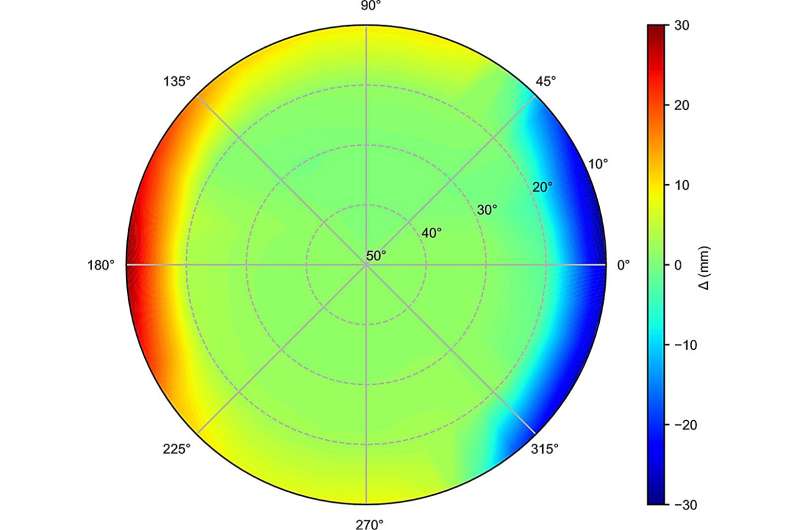This article has been reviewed according to Science X's editorial process and policies. Editors have highlighted the following attributes while ensuring the content's credibility:
fact-checked
proofread
Study uncovers the non-isotropic nature of tropospheric delay for high-precision GNSS positioning

Global navigation satellite systems (GNSSs) provide invaluable positioning data for countless applications, from everyday navigation to scientific research. Tropospheric delays, caused by the refractive properties of the atmosphere, significantly impact the accuracy of GNSS positioning.
The standard practice of multiplying Zenith Tropospheric Delay (ZTD) by a Mapping Function (MF) to derive SPD operates under an assumption of atmospheric isotropy, limiting precision in GNSS applications.
In study published in the journal Satellite Navigation, researchers from Shandong University of Science and Technology introduce a novel concept that SPDs are non-isotropic with respect to azimuth angles, departing from traditional isotropic and anisotropic assumptions.
They utilized three different mapping functions and conducted evaluations at five International GNSS Service (IGS) stations, employing the ray-tracing method as a benchmark.
The study compared SPD accuracy using Vienna Mapping Function 3 (VMF3) and found the smallest residual between VMF3-derived SPDs and ray-traced SPDs. Surprisingly, introducing a horizontal gradient correction for azimuth-dependent SPD variations showed no significant improvement in accuracy.
Dr. Ying Xu, the leading researcher of this study, said, "This revelation of non-isotropic tropospheric delays is a game-changer for high-precision GNSS applications. By acknowledging and understanding these variations across azimuth angles, we can develop more accurate models, significantly enhancing the reliability of GNSS positioning systems."
The discovery of non-isotropic behavior in SPD across different azimuth angles highlights a pivotal aspect previously overlooked in tropospheric delay modeling.
This insight challenges existing methodologies and suggests the need for new models that accurately represent the complex dynamics of the troposphere. Such advancements are crucial for applications requiring high-precision GNSS positioning, such as geodesy, navigation, and atmospheric sciences.
More information: Ying Xu et al, An initial investigation of the non-isotropic feature of GNSS tropospheric delay, Satellite Navigation (2024). DOI: 10.1186/s43020-023-00122-5
Provided by TranSpread





















